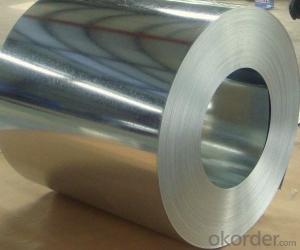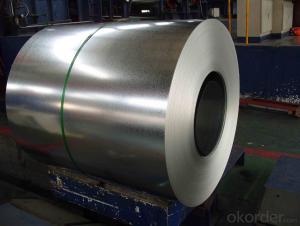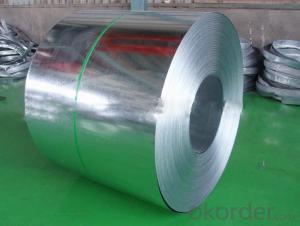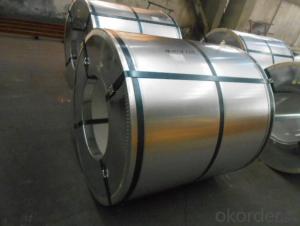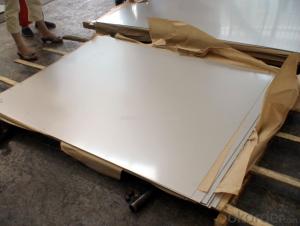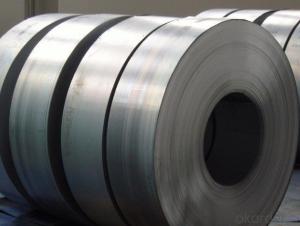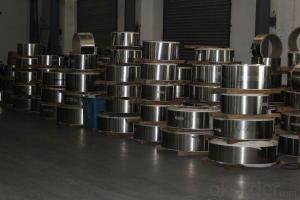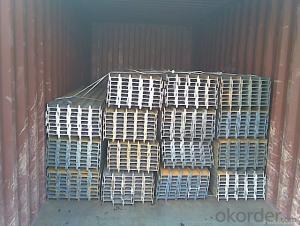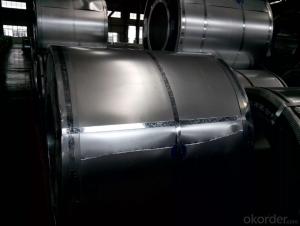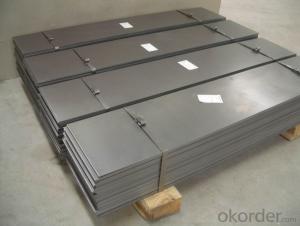Hot Dipped Galvanized Steel Coil/Hot Dipped Galvanized Steel Strips Coil/Zinc Coated Steel Coil
- Loading Port:
- Tianjin
- Payment Terms:
- TT OR LC
- Min Order Qty:
- 500 m.t.
- Supply Capability:
- 100000 m.t./month
OKorder Service Pledge
OKorder Financial Service
You Might Also Like
Hot Dipped Galvanized Steel Coil/Hot Dipped Galvanized Steel Strips Coil/Zinc Coated Steel Coil Specifications:
Steel strips coils galvanized
Material: Q195, Q215, Q235, Q345B, SGCC, DX51D+Z
Thickness:0.75-4.5mm
Width:32-750mm
Zinc coating: 60-550g/m2
Hot Dipped Galvanized Steel Coil/Hot Dipped Galvanized Steel Strips Coil/Zinc Coated Steel Coil Description:
Galvanized steel coil are widely used in the construction industry, as raw material for the production of corrugated panels, fencing products, drywall panel profiles, ventilation systems etc. Recommended for both outside and inside usage, galvanized steel has a high resistance to corrosion in different environments, due to a protective layer of zinc of 100 – 180 grams per square metre.
Main Features of Hot Dipped Galvanized Steel Coil/Hot Dipped Galvanized Steel Strips Coil/Zinc Coated Steel Coil:
Hot-dip galvanized steel coils are produced by immersing steel in a zinc bath. An appropriate galvanizing process requires a pretreatment process during which the steel passes through different baths which prepare the surface for zinc coating. In this stage, chemicals are used to clean the surface of the steel. After the chemical treatment, the steel coils pass through a bath of melted zinc at temperatures around 460 ° C. The resulting uniform coating is finished through a process of skin-passing to provide smooth and shiny appearance of the finished product. To store for a longer period, the hot-dip galvanized coils can be delivered with a final oil coating, according to the customer’s demand.
Hot Dipped Galvanized Steel Coil/Hot Dipped Galvanized Steel Strips Coil/Zinc Coated Steel Coil Images:
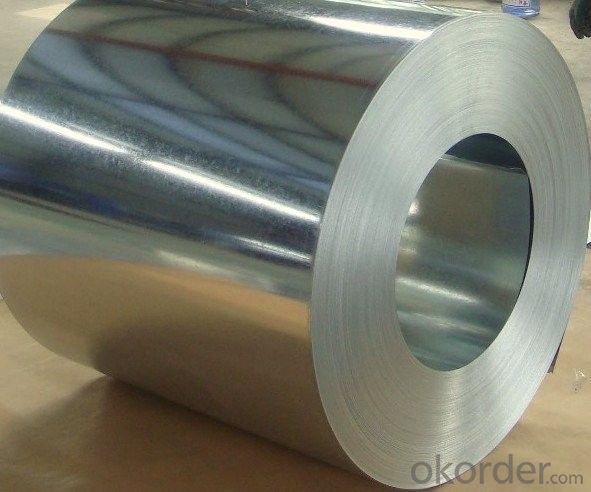
FAQ:
What certificates do you have for your products?
ISO
- Q: What are the tolerances for dimensions in steel strips?
- The dimensions of steel strips can vary in terms of tolerances, depending on specific requirements and industry standards. Generally, width, thickness, and length tolerances are specified either as a range or a specific measurement. For width tolerances, it is customary to establish a range within which the actual width of the steel strip can fluctuate. This range is typically expressed as a plus or minus value, indicating the maximum allowable deviation from the specified width. For example, a common width tolerance for steel strips could be ± 0.02 inches (or ± 0.5 mm). Similarly, thickness tolerances also have a specified range within which the thickness of the steel strip can vary. This range is often stated as a plus or minus value, indicating the maximum permissible deviation from the specified thickness. For instance, a typical thickness tolerance for steel strips might be ± 0.001 inches (or ± 0.025 mm). Regarding length tolerances, a specified range is provided to denote the acceptable deviation from the specified length of the steel strip. This range is generally expressed as a plus or minus value, indicating the maximum allowable deviation. For example, a common length tolerance for steel strips may be ± 0.04 inches (or ± 1 mm). It is important to note that these tolerances may differ depending on various factors, such as the specific application, the grade of steel, and the manufacturing process employed. Therefore, it is crucial to consult relevant industry standards, customer requirements, or the technical specifications provided by the steel strip manufacturer to determine the precise tolerances for dimensions in a given steel strip.
- Q: How do steel strips perform in stamping and forming operations?
- Steel strips generally perform well in stamping and forming operations due to their high strength and ductility. They can withstand the pressures and forces involved in these processes without deforming or cracking easily. Additionally, steel strips can be easily shaped into various forms and sizes, making them ideal for complex and precise stamping and forming operations.
- Q: How do steel strips respond to different magnetic fields?
- Steel strips respond differently to different magnetic fields depending on their composition, shape, and orientation. Steel is a ferromagnetic material, which means it can be magnetized and exhibits strong magnetic properties. However, the response of steel strips to magnetic fields can vary. When a steel strip is exposed to a magnetic field, it can become magnetized and exhibit its own magnetic properties. The strip can either attract or repel other magnetic objects depending on the orientation of the field. This behavior is due to the alignment of the steel's microscopic magnetic domains, which can align with an external magnetic field and create a stronger magnetic effect. The strength of the magnetic field applied to the steel strip also plays a role in its response. A stronger magnetic field will result in a more pronounced magnetization of the steel strip, while a weaker field may have a lesser effect. Additionally, the shape and dimensions of the steel strip can influence its response to magnetic fields. Thinner strips may be more easily magnetized, while thicker strips may require stronger fields to exhibit significant magnetic properties. The composition of the steel strip is another important factor. Different types of steel alloys have varying magnetic properties. For example, stainless steel has a relatively low magnetic permeability and is less responsive to magnetic fields compared to other steel alloys. On the other hand, low-carbon steels are highly magnetic and can be easily magnetized. In summary, steel strips respond to different magnetic fields based on their composition, shape, and orientation. The magnetic properties of the steel and the strength of the applied magnetic field determine the level of magnetization and the strip's interaction with other magnetic objects.
- Q: What are the dimensional inspection methods for steel strips?
- There are several dimensional inspection methods commonly used for steel strips. These methods are employed to ensure the accuracy and conformity of the dimensions of the steel strips to the specified standards. Some of the commonly used dimensional inspection methods for steel strips include: 1. Calipers: Calipers are used to measure the thickness, width, and length of the steel strips. They provide accurate measurements by directly comparing the dimensions of the steel strip with the calibrated scale on the caliper. 2. Micrometers: Micrometers are precision instruments used to measure the thickness and width of steel strips with high accuracy. They can measure dimensions up to the micrometer level, ensuring precise measurements. 3. Optical comparator: Optical comparators use magnification and illumination to compare the dimensions of the steel strip with a reference standard. This method enables visual inspection and measurement of various dimensions, such as width, length, and shape. 4. Laser measurement: Laser measurement systems utilize laser beams to measure the dimensions of steel strips accurately. They can provide non-contact measurements of width, thickness, and other dimensions, ensuring high precision and speed. 5. Coordinate measuring machine (CMM): CMM is a highly precise and automated dimensional inspection method. It uses a probe to measure multiple dimensions of the steel strip, including length, width, thickness, and even complex geometries. CMMs provide highly accurate measurements and are suitable for inspection of various steel strip profiles. 6. Vision systems: Vision systems use cameras and image processing algorithms to inspect the dimensions of steel strips. They can measure dimensions such as width, length, and thickness, and can also detect surface defects or irregularities. These dimensional inspection methods are often used in combination to obtain comprehensive and accurate measurements of steel strips. The selection of the appropriate method depends on the specific requirements, accuracy needed, and the type of steel strip being inspected.
- Q: How are steel strips heat treated?
- Steel strips are heat treated through a process known as annealing or tempering, which involves exposing the strips to controlled heating and cooling cycles. The purpose of heat treating steel strips is to improve their mechanical properties, such as hardness, toughness, and ductility. During annealing, the steel strips are heated to a specific temperature, typically above its critical temperature, and then slowly cooled down. This process relieves internal stresses, refines the grain structure, and improves the overall machinability of the steel strips. It also enhances the ductility and toughness, making the strips more resistant to deformation and cracking. Tempering, on the other hand, follows a similar heating process but involves reheating the steel strips to a lower temperature and then rapidly cooling them. This step is performed to reduce the hardness and increase the toughness of the steel strips. By selecting the appropriate temperature and cooling rate, the desired combination of strength and toughness can be achieved. The heat treatment of steel strips is often performed in controlled atmospheres or in furnaces, where the temperature and cooling rate can be precisely regulated. This ensures consistent and reliable heat treatment results. Additionally, other factors such as the composition of the steel and the desired end properties also influence the specific heat treatment process. Overall, heat treating steel strips is a critical step in their manufacturing process as it allows for the optimization of their mechanical properties, making them suitable for a wide range of applications in industries such as automotive, construction, and manufacturing.
- Q: Specification and use of cold rolled strip
- Cold rolled strip specifications: cold rolled strip and sheet, the general thickness of 0.1 ~ 3mm, width of 100 ~ 2000mm; are hot rolled strip or steel plate as raw material, at room temperature by cold rolling rolling. Grades are generally: SPCC, Q195, Q235-B.
- Q: How are steel strips processed for polishing?
- Steel strips are typically processed for polishing through a series of steps that involve removing imperfections and creating a smooth, reflective surface. This process usually includes cleaning the strips, grinding or sanding them to remove any roughness or defects, followed by buffing and polishing to enhance their shine and smoothness.
- Q: How are steel strips stored and transported?
- Steel strips are typically stored in warehouses or outdoor storage yards. They are often stacked vertically or horizontally, using special racks or supports to prevent damage. When it comes to transportation, steel strips are commonly loaded onto trucks, ships, or trains. They are secured with straps or chains to ensure stability during transit. Additionally, protective coverings or packaging may be used to safeguard against environmental factors or potential scratches.
- Q: How do steel strips contribute to reducing material waste in various applications?
- Steel strips contribute to reducing material waste in various applications by providing a highly efficient and cost-effective solution for manufacturing. Due to their high strength and flexibility, steel strips can be used in thinner dimensions compared to other materials, resulting in less material waste during production. Additionally, steel strips can be easily recycled, further reducing waste and environmental impact.
- Q: How are steel strips measured and classified?
- Steel strips are typically measured and classified based on their dimensions and properties. The measurements include thickness, width, and length, which are usually specified in millimeters. Classification is based on factors such as the steel grade, surface finish, and specific applications. The classification system helps to ensure that steel strips are accurately identified and used in the appropriate industries.
Send your message to us
Hot Dipped Galvanized Steel Coil/Hot Dipped Galvanized Steel Strips Coil/Zinc Coated Steel Coil
- Loading Port:
- Tianjin
- Payment Terms:
- TT OR LC
- Min Order Qty:
- 500 m.t.
- Supply Capability:
- 100000 m.t./month
OKorder Service Pledge
OKorder Financial Service
Similar products
Hot products
Hot Searches
Related keywords
